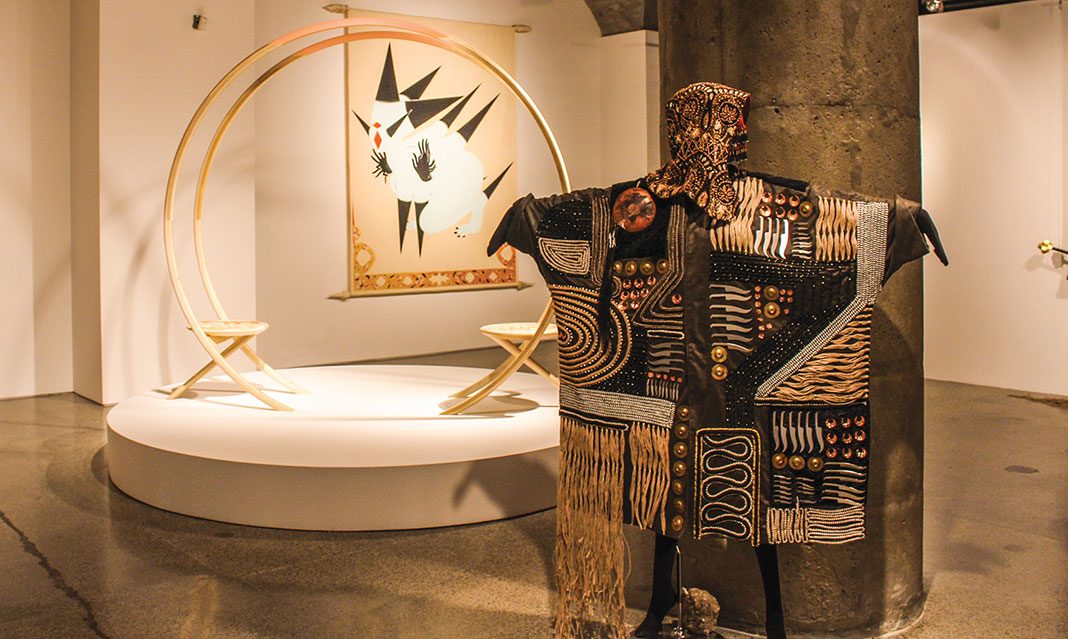A new home for contemporary art has opened in the up and coming area of Toronto’s Junction Triangle. The Museum of Contemporary Art (MOCA) has grown out of its humble beginnings in Queen West and is now situated in what used to be an aluminum factory, called the Tower Automotive Building, that made products for both World Wars. The heritage of the building juxtaposes the current artworks inside, making for a unique museum experience. The main goal that MOCA strives to accomplish is being a destination of exchange, whether that be from artists to visitors, the art to the visitors, or visitors to the art and artists. Currently, MOCA has six exhibits that are currently on view and they all take on different themes and work with different mediums.
BELIEVE is a groundbreaking exhibit that features 16 artists depicting how we believe and perceive the systems that society is built upon. These depictions are in the forms of textiles, sculptures, film, printmaking, photography, animation, and performance. Upon entering MOCA, visitors are greeted by artist Kendell Geer’s neon artwork BE:LIE:VE, 2002. This piece functions to get viewers thinking about the contradictory notion that the word “believe” has the word “lie” within it. The artwork sets the stage for storytelling about the concept of belief.
On the second floor of MOCA formally begins the BELIEVE exhibit. As the doors of the elevator open, a wall of 12 brightly coloured photo-based etchings by Carl Beam are displayed and collectively named “The Columbus Suite.” The etchings depict notable historical figures who were prosecuted for their beliefs. Among these portraits are Martin Luther King Jr, John F. Kennedy, and Abraham Lincoln. This series of work examines colonialism and the various ideologies of society in an intriguing way.
Rehearsing Disagreement is another thought-provoking exhibit at MOCA that is incredibly relevant in the context of the current political climate. It uses an interactive format for visitors to be hands on with the artwork. This exhibit is reflective of MOCA’s goal of creating exchange through art. Artists Hiba Abdallah and Justin Langlois came together to create pieces that start productive conversation by delving into disagreements and contention.
Through the installation, “Decisions, Decisions (it’s all about you),” visitors are faced with four posters, each with a statement in bold black font about how one conducts themselves in disagreements. At the bottom of each of the posters are the words ‘agree,’ ‘disagree,’ and ‘ambivalence.’ The audience is given the opportunity to indicate where they stand on the statement by placing a sticker next to the chosen word. It is fascinating to have a visual of the ways in which individuals perceive arguments.
“Striking a Balance” is a sculpture that is a functional see-saw with a scale of agreeance. Spectators can become an active part of the art by hoping onto the see-saw and acknowledging how the weight of our bodies change the scale in terms of agreeance. This is a fun way for the audience to engage with discourse on our differences and the division of taking a particular position.
Laws of Motion in a Cartoon Landscape is an exhibition by Andy Holden. The premise of this exhibition is to share the physics of cartoon action. Holden breaks down the deviations from real-world physics to physics in cartoons, and how they are used for comedic and artistic purpose by distinguishing ten laws. The centerpiece of this artwork is an animation of Holden himself explaining the laws by giving examples from classic cartoons such as Bugs Bunny and Road Runner. This exhibition provides a remarkable analysis and education of animation and the ways in which it plays with physics. All of the pieces exhibited in MOCA are accompanied by brief, comprehensive excerpts of the background and purpose of the work. This is a great feature that makes the art more relatable as well as less intimidating to the general audience. MOCA is certainly worth a visit to gain new perspectives and a museum experience like no other.



